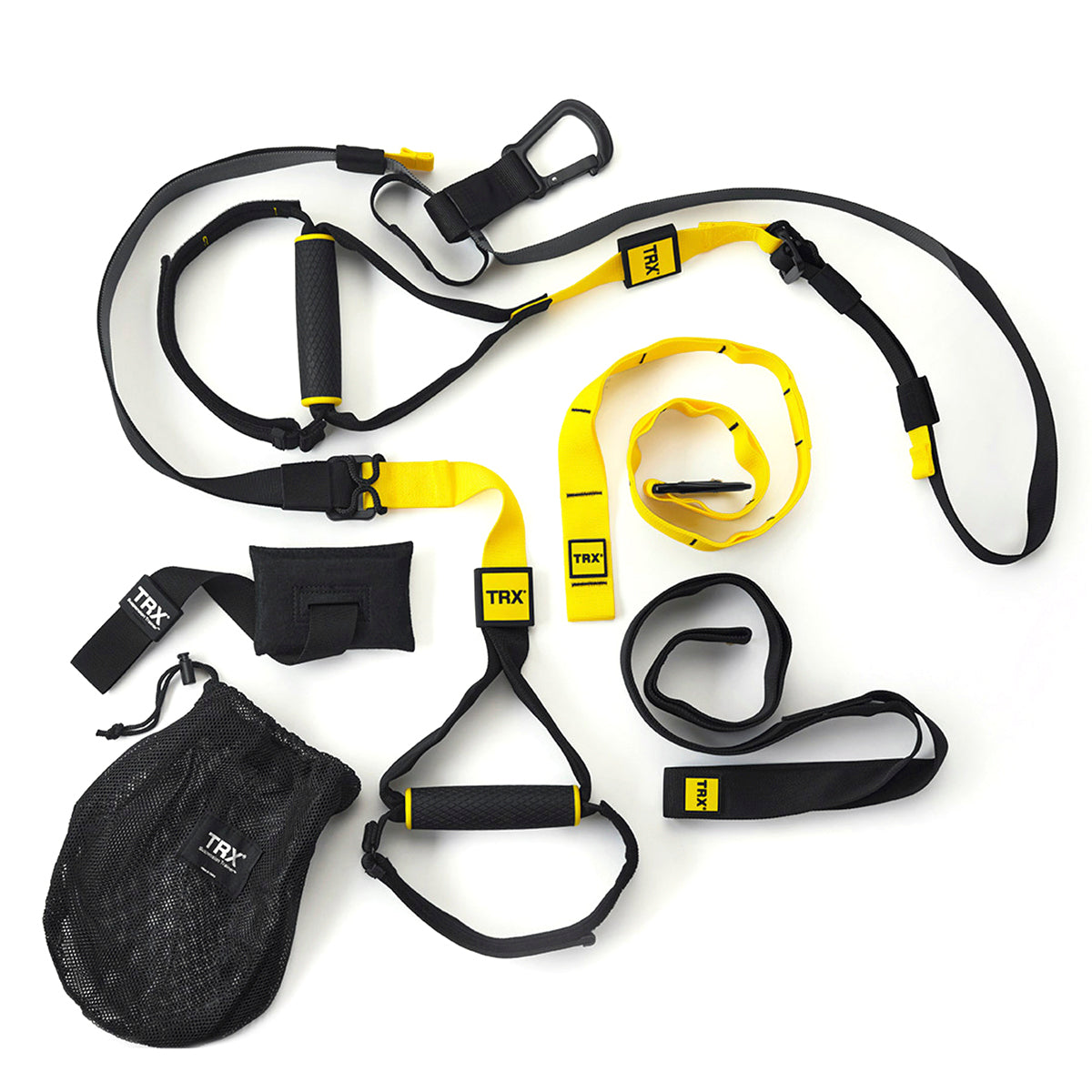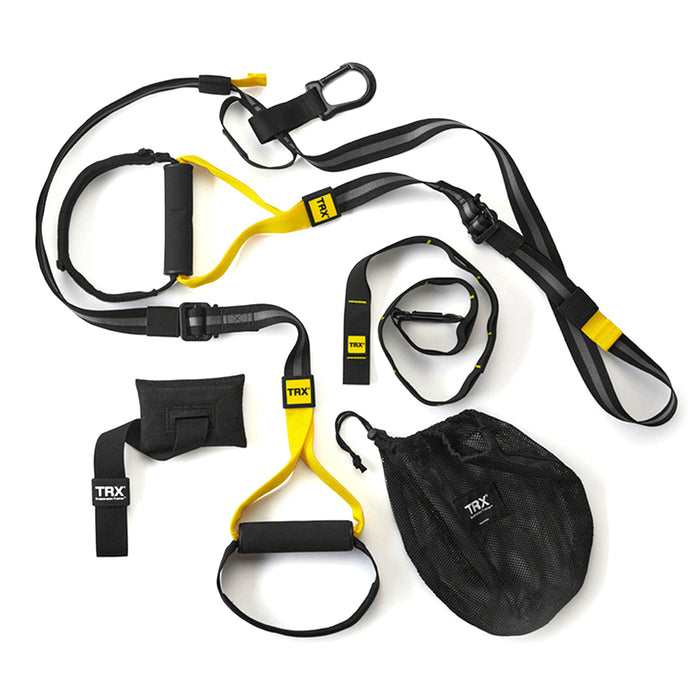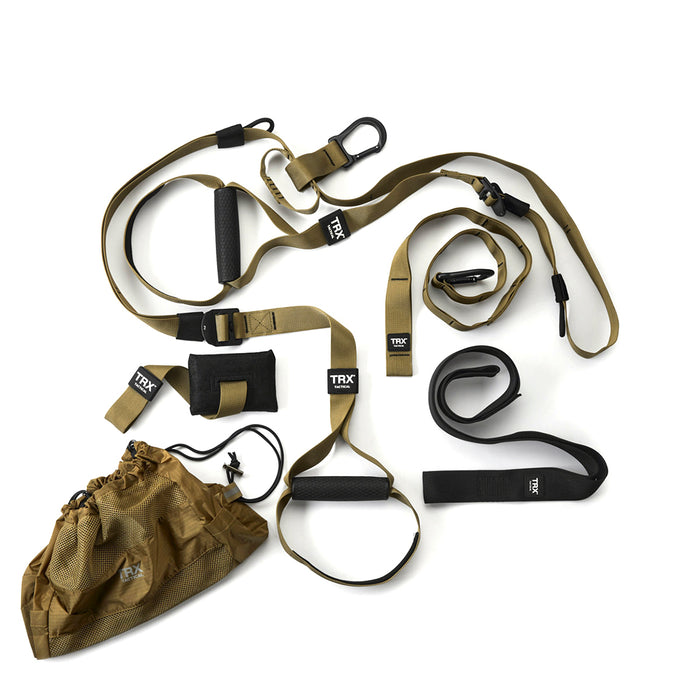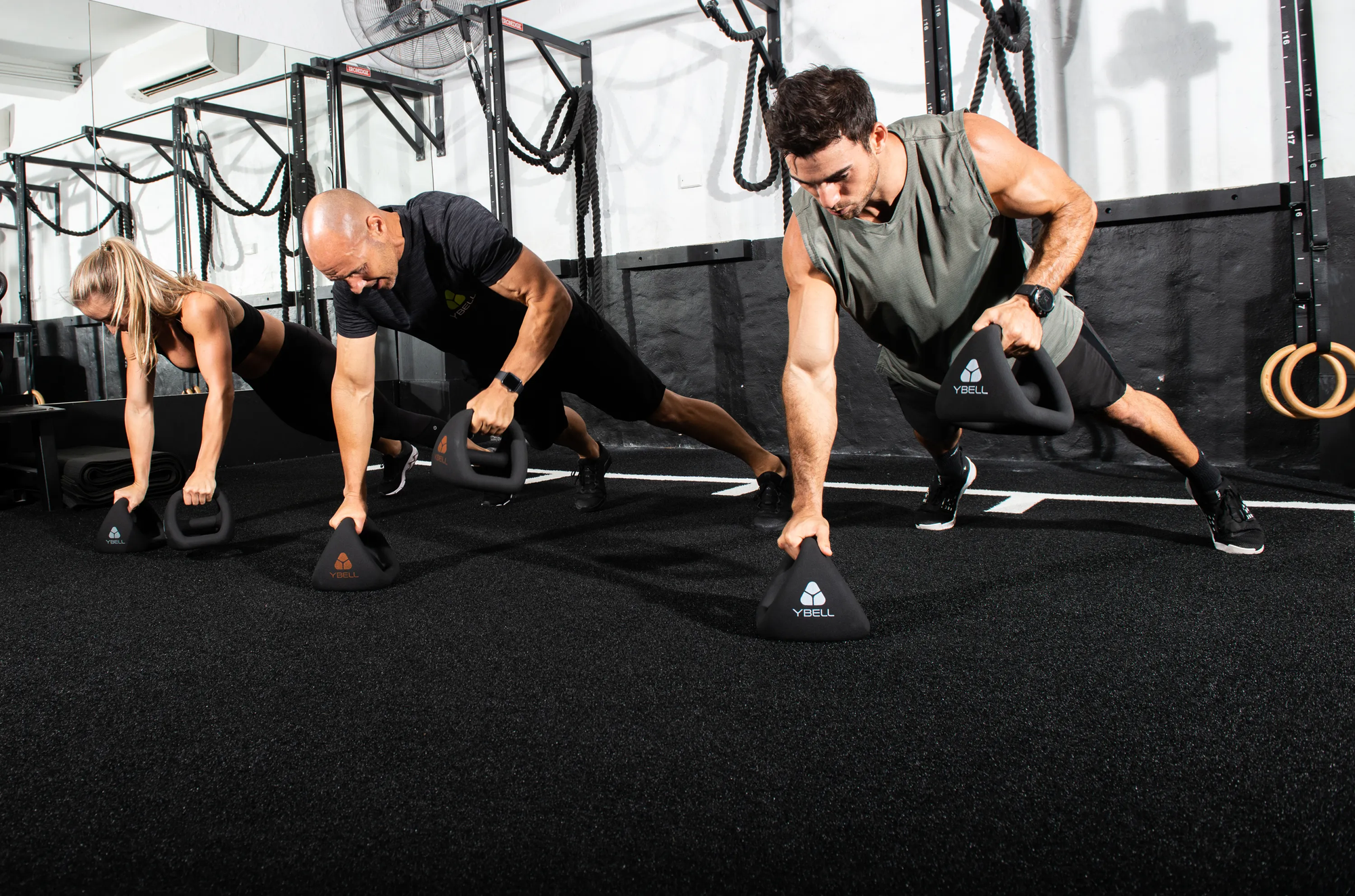You may have heard about compound exercises and asked yourself, “What’s the big deal?” or “What advantages do they have over machines or isolation exercises?” Some of you may even say, “I get why, but how do I incorporate them into my current routine?”
This blog will cover those questions, discuss the importance of compound exercises, and share some compound exercise workouts you can use regardless of your current fitness level.
What are Compound Exercises?
Compound exercises are a key component of any effective workout routine if you're looking to enhance your physical strength and muscle development. These dynamic movements engage multiple muscle groups simultaneously, allowing you to maximize your gains and achieve your fitness goals. Incorporating compound exercises into your regimen is crucial for those aiming to build strength and sculpt their physique.
The Benefits of Compound Exercises
When you perform a compound exercise, you engage multiple muscle groups simultaneously. Want to find the perfect compound exercises for your fitness level? Take our quick assessment quiz to get a personalized full-body workout plan. As an example, air squats engage a variety of different muscles – including core muscles, glutes, quads, hamstrings, and more.
As a result, performing compound exercises regularly yields both short and long-term benefits, transferable to far more than just increased strength and size. Some pros of compound exercises include:
- You burn more calories when compared to exercises that only train a single muscle group.
- You’ll see improved mobility, balance, flexibility, and coordination.
- Muscle growth is more rapid when compared to isolation exercises, and you will burn more calories.
- You’ll be able to maintain a high heart rate more easily due to improved cardiovascular endurance.
- You can strengthen your core without resorting to crunches.
7 Types of Compound Exercises
Compound movements are often found in functional training with the most effective exercises being those that are similar to everyday movements – squats, hinges, lunges, pressing, pulling, carrying, and rotating.
All of these exercises can be incorporated into your routine, but you should add the one that you feel most comfortable with given your current fitness level. Here are just some examples of common compound exercises.
1. Squats
As a compound leg exercise that focuses on developing your hamstrings, glutes, and quads, the squat is the favorite exercise by strength and weight loss coaches and physical therapists. Perfectly trained squats burn a ton of energy and build protection around your knees and lower back. Think about how many times you get up off the couch or a chair — those are a form of squatting. What would happen if you were to lose that ability?
Try these beginner to advanced squat exercises:
- Beginner method: Bodyweight Squat
- Intermediate method: YBell Low Squat
- Advanced method: Barbell Back Squat or YBell Rack Squat
2. Hinges
A proper hip hinge with a full range of motion at the hips works both your hamstrings and glutes. People who understand how to hip hinge with proper form typically have fewer back problems.
Deadlifts are a common and crucial hinge movement found in strength training that mimics the activities of your everyday life. It’s the definition of picking something off the floor and placing it down. Imagine picking your toddler up or lifting a laundry basket off the floor — that’s hinging.
Try these beginner to advanced hinge exercises:
- Beginner method: Glute Bridges or Bridge Taps
- Intermediate method: Dumbbell or YBell Deadlift
- Advanced method: Barbell Deadlift
3. Lunges
Lunging is a crucial compound movement pattern that transfers to walking and running, moving up and down a flight of stairs, and kneeling. Lunging requires both legs as well as strong hips and solid core strength. The lunge also offers dozens of variations by incorporating upper body movements such as curls, presses, shoulder raises, and rotations.
Try these beginner to advanced lunge exercises:
- Beginner method: Bodyweight Forward or Reverse Lunges
- Intermediate method: Dumbbell Walking Lunges or YBell Rack Lunges
- Advanced method: Alternating Back Lunges With Tricep Extension
4. Pressing
Pressing should be a familiar upper-body compound movement. We incorporate pressing movements in two directions: vertical (overhead) pressing works the shoulders, and horizontal pressing (like push-ups) works your chest.
Pressing overhead is an excellent indicator of your total body strength. An overhead press with proper form strengthens your shoulders, arms, core muscles, and even your glutes.
Try these beginner to advanced vertical pressing exercises:
- Beginner method: Seated Dumbbell or YBell Shoulder Press
- Intermediate method: Standing YBell Rack Press
- Advanced method: Barbell Overhead Press
Try these beginner to advanced horizontal pressing exercises:
- Beginner method: Tricep Push-ups
- Intermediate method: Dumbbell or YBell Floor Press
- Advanced method: Barbell Bench Press
5. Pulling
Most of our life is in front of us. We rarely consider our backs unless there’s a problem, but that’s where pulling exercises come in. Pulling exercises, like pull-ups, are compound back exercises that help strengthen the areas that generally start causing pain — problems we tend to view as “normal” parts of the aging process.
As with pressing, we have vertical and horizontal options to work on multiple planes of movement.
Try these beginner to advanced vertical pulling exercises:
- Beginner method: Lat Pulldowns
- Intermediate method: Banded Chin-ups
- Advanced method: Bodyweight Pull-ups
Try these beginner to advanced horizontal pulling exercises:
- Beginner method: Bodyweight Row
- Intermediate method: Dumbbell 3-point Rows or YBell Push-up Rows
- Advanced method: Dumbbell or YBell Bent-over Row
6. Carrying
How is carrying a functional movement? Proper carrying uses every muscle group in your body at once — legs for walking, hips and core for stability, back for bracing, and arms for carrying. You can't get more compound than that.
You can progress your carry grip to make the movement even more challenging once you master the basics.
Try these beginner to advanced carrying exercises:
- Beginner method: Dual Dumbbell or YBell Farmer’s Carry
- Intermediate method: Single-arm Dumbbell or YBell Farmer’sCarry
- Advanced method: Mixed Rack Dumbbell or YBell Farmer’s Carry
7. Rotating
We generally view strength training in terms of linear movement — moving the weights up and down. However, your daily life takes place along multiple planes of movement, and if you don’t work on strengthening those planes, you’ll significantly increase your chance of sudden and lingering injury.
Imagine trying to put on your seatbelt, swing a golf club, or play with your kids without the ability to twist. Incorporating twisting and rotating will help strengthen those forgotten areas in your core and back.
Try these beginner to advanced rotating exercises:
- Beginner method: Resistance Band Rotations
- Intermediate method: Dumbbell or YBell Russian Twists
- Advanced method: Sledgehammer Slams
Do your next compound exercise workouts with our TRX equipment:
Compound Exercise Workouts
Looking for some workouts you can add to your routine? Try one of these three workouts based on your current fitness level.
Beginner Compound Exercise Workout
Complete 3 rounds of each set with a moderate weight, like a YBell Neo. You can start with YBell Arcs if you’re new to using weights and want to start with something lighter. Remember to rest between sets.
Set 1
- Bodyweight Squats, as many reps as possible in 30 to 45 seconds
- Bodyweight Reverse Lunges, 10 to 12 reps per leg
- Glute Bridges, 10 to 15 reps
- Rest: 60 to 90 seconds
Set 2
- Push-ups, 8 to 10 reps
- Suspension Row, 10 to 12 reps
- Rest: 60 seconds
Set 3
- 3 Point Row, 10 reps per arm
- Seated Shoulder Press, 10 reps
- Rest: 60 seconds
Intermediate Compound Exercise Workout
Complete 3 rounds of each set with a moderate free weight, like a YBell Neo. Remember to rest between sets.
Set 1
- YBell Shoulder Squat, 10 to 12 reps
- YBell Lunges, 10 reps per leg
- Rest: 60 to 90 seconds
Set 2
- Dumbbell or YBell Deadlift, 10 to 12 reps
- Single Arm Carry, 20 feet and back
- Rest: 60 to 90 seconds
Set 3
- Shoulder Press, 8 to 12 reps
- Banded Chin Ups, 6 to 10 reps
- Russian Twist, 10 to 15 reps per side
- Rest: 60 seconds
Set 4
- Floor Press, 8 to 12 reps
- Single Arm Row, 10 to 12 reps per arm
- Rest: 45 to 60 seconds
Advanced Compound Exercise Workout
Complete 3 to 4 rounds of each set with a moderate to heavy free weight, like a YBell Neo or YBell Pro. Remember to rest between sets.
Set 1
- Back Squat, 8 to 12 reps
- YBell Step-ups, 10 reps per leg
- Rest: 60 to 90 seconds
Set 2
- Deadlift, 6 to 8 reps
- Rest: 60 to 90 seconds
Set 3
- Barbell Overhead Press, 8 to 12 reps
- Pull-ups, 6 to 10 reps
- Dual YBell Overhead Carry, 25 feet and back
- Rest: 60 seconds
Set 4
- Bench Press, 6 to 8 reps
- Bent-over Row, 10 reps
- Rest: 45 to 60 seconds
Conditioning
- Sledgehammer Slams, 6 to 8 reps per side
- Rest: 30 seconds
Why You Should Work Compound Exercises Into Your Fitness Routine
Compound movement exercises effectively achieve your fitness goals, whether you're trying to build more muscle or want to become an endurance runner.
They burn more calories for weight loss, work multiple muscle groups for strength training, and transfer to your everyday movements to keep you strong as you age.
Compound movements are also scalable to your fitness level. As you get stronger, you can continue to make them challenging, and adding free weights is just one way to do it. You can quickly progress each exercise by adding in another movement. Here's an example of how you could progress a squat into a complex yet fluid compound movement:
- Start with a basic squat
- Add resistance and squat while holding a free weight
- Add a lateral cross-catch movement for a Cross-catch squat
- Add a pick-up movement for a Pick-up cross-catch squat
- Add a shoulder press for a Pick-up cross-catch squat press
- Add a rotational movement for a Pick-up cross-catch squat press with a spinal twist
With compound movements, you'll never get bored while training! You can see how easy adding more challenges to your workout is. Not only that, by using compound movements, you can perform shorter, more efficient activities when you're short on time or motivation.
Get the Best Free Weights for Compound Exercises at YBell Fitness!
YBell is a four-in-one functional fitness tool that’s perfect for compound exercises. Its award-winning multi-handle, multi-grip design allows it to function as a dumbbell, a kettlebell, a double-grip med ball, and a push-up stand.
That means you can seamlessly transition the YBell from a two-handed grip to a single-handed grip, or even from your left hand to your right hand, without throwing off the weight distribution. Keeping an even weight distribution significantly lowers your risk for injury and helps you keep your workout moving.
Take the squat compound movements above: You’d grab the top handle with an outer grip to pick the YBell off the ground. When you transition to the cross-catch or the press, you will hold the center handle of the YBell with your other hand for a center grip, which keeps the weight evenly distributed around your hand. The multi-handle, multi-grip design allows you to transition those movements, and transition the YBell from one hand to the other, with ease.
If you’re ready to add more compound strength training exercises to your fitness routine, consider picking up a pair of YBells today. You can also check out the TRX Training App for more great compound movements and YBell-specific functional exercises you can do in your home gym.





